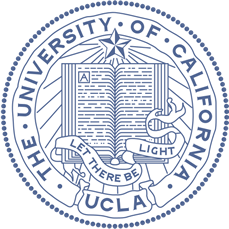In addition to dealing with coronavirus, workplaces must comply with the requirement to protect employees against other pathogens. There is a current need therefore to assist employers and employees in various industries (not just healthcare) in addressing the requirements of the bloodborne pathogens regulation. The California Code of Regulations Title 8, Section 5193 protects employees who work in occupations where there is risk of exposure to blood and other potentially infectious materials. Because of the detail in this regulation, it is important to understand who is covered under it, the definitions, requirements of the exposure control plan and how it must be used in order protect the health and safety of our workers at each of our places of employment.
This class will focus on Bloodborne Pathogens under California Regulation.
Course Overview:
This 4-hour course will provide the participant with in-depth knowledge to put together an effective Bloodborne Pathogens Exposure plan. We will discuss the importance of the definition of “Bloodborne pathogens” under the regulation, which are the viruses and pathogens included within this very important regulation and how to formulate a plan that will be effective in preventing the exposure to such pathogens. We will also discuss:
- The importance of defining “occupational exposure”
- The Exposure Control plan (ECP) and the elements
- Setting up a process for the identification and selection of appropriate and up-to- date Engineering Controls
- Employee involvement in regards to methods of compliance and administrative controls used to reduce or eliminate the exposure to bloodborne pathogens while at work
- Most common “lack-of-compliance” issues in healthcare and other types of industries (Hepatitis B vaccination issues, sharps containers, cleaning and decontamination issues, handling of laundry, post-exposure incidents, etc.)
Learning Objectives:
This course will enable participants to:
- Define bloodborne pathogens and the scope of the Bloodborne Pathogens regulation in California
- Describe the elements of a compliant Bloodborne Pathogens “Exposure Control Plan” for different types of industries: Commercial and industrial facilities, first responders and healthcare.
- Establish a process for identification of appropriate and up-to-date engineering controls for the prevention or elimination of exposure to bloodborne pathogens at the workplace
- Examine at least 4 different types of administrative controls and methods of compliance at the workplace in order to eliminate and reduce bloodborne pathogen exposure at the workplace
- Develop a compliant training program for different types of industries: first responders, commercial or industrial facilities and healthcare
- Analyze the requirements for a sharps’ injury log and other recordkeeping requirements
- Implement post-exposure evaluation and follow up procedures
- List useful resources and recommended documents by Cal/OSHA
Agenda:
- Introduction to the Standard
- Scope
- Definitions
- Occupational Exposure
- The Exposure Control Plan: mandated elements and their relation to different types of industries:
- Employee exposure determination
- Schedule and methods of implementation of each of the following:
- Methods of Compliance,
- HIV, HBV and HCV Research Laboratories and Production Facilities,
- Hepatitis B Vaccination and Post-exposure Evaluation and Follow-up
- Communication of Hazards to Employees,
- Recordkeeping, of this standard;
- The procedure for the evaluation of circumstances surrounding exposure incidents
- An effective produce for gathering the information required by the Sharps Injury Log.
- An effective procedure for periodic determination of the frequency of use of the types and brands of sharps involved in the exposure incidents documented n the Sharp Injury Log
- An effective procedure for identifying currently available engineering controls,
and selecting such controls, where appropriate, for the procedures performed by
employees in their respective work areas or departments; - An effective procedure for documenting patient safety determinations
- An effective procedure for obtaining the active involvement of employees in
reviewing and updating the exposure control plan with respect to the procedures
performed by employees in their respective work areas or departments.
- Requirements of the annual review of your ECP
- The requirements of the sharp’s injury log
- How to do the exposure determination
- Describing Methods of Compliance:
- Universal precautions
- Engineering controls, needle-less systems
- Administrative controls
- Prohibited practices
- Sharps containers and contaminated sharps
- Regulated waste
- Handling specimens
- Servicing equipment and cleaning and decontamination of the worksite
- The importance of hygiene
- How to handle laundry
- Enlisting Personal Protective Equipment (PPE) for the prevention of
exposure to bloodborne pathogens once engineering controls and administrative
controls are in place. - Laboratories and Production facilities, a summary
- Hepatitis B vaccination requirements and the employee declination form
- Once someone is exposed: Post-exposure evaluation and follow up
- Communication of hazards to employees
- Recordkeeping
- Useful resources
* Subject to modification
Other Registration Options
Call Us: 310 206-2304
Email Us: lmlorenzana@ucla.edu, erc@ph.ucla.edu
Payment Terms:
Classes are subject to cancellation by the host due to low registration or scheduling issues. If a class is cancelled by the host, participants will receive a full refund of their original payment.
(rev. 11/6/09):
Participant cancellations must be in writing. Refund schedule due to participant-requested cancellations is:
- 15 or more business days before the class: 80% of registration fee
- 7-14 business days before the class: 50% of registration fee
- Less than 7 days before the class and "no shows": No refund
If course materials such as books have been sent to course participants in advance, the cost of that material will be subtracted from the refund.
UCLA reserves the right to postpone an offering 7 days prior to the course date should minimum enrollment requirements not be met. If a program is canceled, you will be notified and your registration fee will be refunded in full, less the cost of course materials sent in advance if they are not returned in the condition in which they were received. The liability of UCLA is limited to the course fee.


